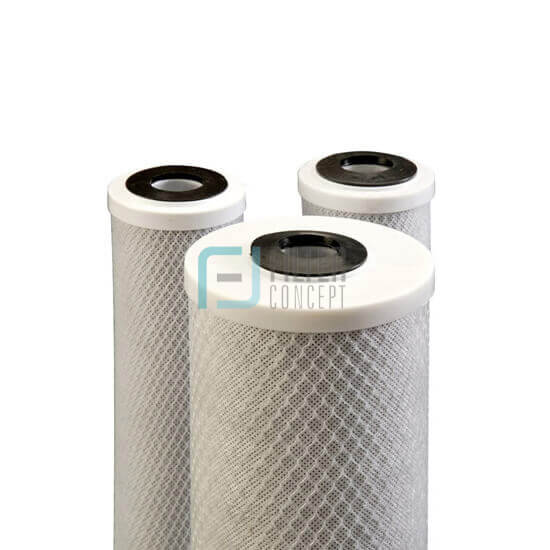
Just as the name suggests, Filter Media is a medium used for the process of filtering. A filter medium is any object that, when operating, allows certain components to permeate and disallows some components to permeate. The materials that are impermeable could be solids, liquids, or even molecular or ionic. Generally, the permeable component is a flowing liquid, but it is not limited to that and could be one or more components bound together. The only condition of a filter is that it is a material that is porous in its characteristic or carries the potential to become porous. The size of the pores is irrelevant to its condition as a filter.
The quality of a filter medium is gauged by its strength toward resistance of permeability, flexibility, and its ability to withstand corrosion and wear and tear. A good filter should be easily moulded into shapes and porosities, based on the requirement. Such conditions limit the use of several media as a filter medium, but make others stand out as good candidates for a filter medium. Some examples of filter media are minerals, carbon, glass, metals, and metal oxides and ceramics. The below table details the list of filter mediums, along with their pertaining category:
Types of filter media by materials:
| Material | Format |
|---|---|
| Natural Fibre: Wool, Cotton, Etc. | Felt: loose, bonded, needled |
| Natural Filament: Silk | Woven yarn, Filament Knitted yarn, Filament Wound yarn |
| Processed natural Fibre: Cellulose | Wet-laid (paper, filter sheets) |
| Man-made organic: regenerated cellulose synthetic polymers | Granules: loose, bonded, sintered Fibres and Filaments: felted, woven, dry-laid (spun), wet-laid (paper), rigidized, sintered Foam Extruded mesh (‘Netlon’) Sheet: perforated, stretched (fibrillated), porous, membrane Tubular: rigid porous, hollow fibre |
| Metals: ferrous and non-ferrous | Rod or bar structures Granules or powder: loose, sintered Fibres: loose, sintered Sheets: perforated (punched, etched) Wire: wound cartridge, woven mesh, sintered mesh Expanded mesh (‘Expamet’) Foam |
| Glass | Fibre: wet-laid (paper) Porous tube |
| Carbon: natural activated | Granules or powder: loose, bonded, embedded Fibres: loose, felted, woven, embedded Porous block |
| Ceramics: metal oxides | Granules or powder: loose, sintered Formed blocks, with tubular holes Fibres: loose, sintered Foam |
| Other minerals: mineral wools | Fibres: wet-laid (filter sheets), pads |
| sand, anthracite, garnet | Granules |
| Various materials (metal, paper, plastic) | Solid fabrications: stacked discs, edge filters, wedge wire, wire wound |
| Paper-like materials | Pleated sheet |
| Inert granules of all kinds | Packed beds( deep bed filters) |
| Mixtures of inert and active materials | Combination media |
Filter media types by format:
| Basic media format | Types of media |
|---|---|
| Loose granules | Deep bed |
| Loose fibres | Pads, felts |
| Structured granules | Bonded, sintered |
| Structured fibre | Needlefelts, bonded, wet-laid (paper) Spun (spun bonded, melt blown) |
| Sheet | Perfrorated, microporous (including membrane) |
| Woven/knitted | Spun yarn, monofilament (including wire) |
| Structured aray | Ribbon, stacked discs, rod and bar structures |
| Extruded mesh | Netlon’ Type |
The filter media business is one that is growing by leaps and bounds due to the sheer requirement of the product and the various arrays involved in its manufacture, production and sales. While some companies limit their role to the manufacturing of the filter medium, others take on the whole cycle from production to sales.
Within the filter media industry, there are five distinct stages. The first and obvious one is the producer of the primary material from which the medium is to be manufactured (metal wires, natural or synthetic fibres, a ceramic powder, plastic filaments, etc.). The next phase is the conversion of the primary material into an initial form by which it can lend itself to the manufacturing of filter media (spinning fibres, twisting filaments into yarn, crimping wires, etc.). After this, comes the stage of the formation of the bulk medium (weaving cloth or mesh, moulding or sintering of plastic or metal, production of paper and membranes, etc.). The fourth stage is the conversion of this bulk medium into the required size and shape of the filter medium to fit the specific filter (water filters, filter units for vehicles, pleating of flat units, etc.). Lastly, there is the making of the actual filter, which includes the adaptation or placement of the medium into the filter.
